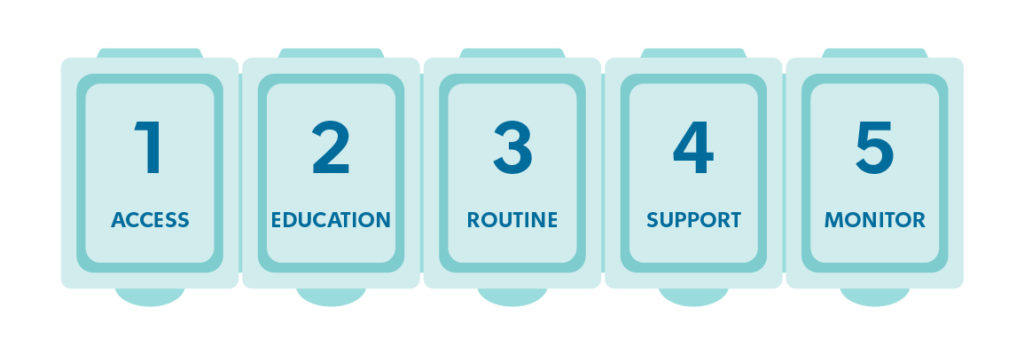
Deep Dive
Improving medication adherence over the long term with the Adherence Continuity Framework
Medication adherence is a complex challenge, and strategies for managing it are almost always fragmented. How can pharma ensure that patients and prescribers are supported to adhere—and persist—over the long term?
Author

- Mark Rose
- VP, Experience Design, Healthcare
Non-adherence costs the US healthcare system anywhere from $100bn to $289bn a year. So it’s unsurprising that a ton of money is thrown at the problem. Silicon Valley produces tracking apps and smart pills. Pharma pumps out starter kits with reminder tools. Providers seek to educate. And insurers have to reconcile some complex actuarial models to determine where and how they can best lean in.
These efforts to improve adherence are laudable. And they often find some success. But because each effort is driven by different stakeholder groups with different vantage points and different motivations, the resulting customer and prescriber experience is often overlooked.
Pharma’s piecemeal approach to adherence needs to change
Even within a single pharma organization, an HCP marketing team may be producing HCP support materials in one room, while a Patient team is designing a starter kit in another, and an Access team is working on a support program in yet another.
What do these piecemeal efforts add up to?
Not as much as they could if the experience were designed more intentionally and holistically.
A service design approach to adherence management
Organizations that embrace a service design approach to adherence management are more likely to deliver more meaningful and impactful experiences for those who prescribe and take their therapies.
In other words, the organizations that see the biggest impact are those that collaborate cross-functionally (and even across institutions) to design a system of interventions that build on each other to deliver a cohesive, best-in-class patient and prescriber experience.
Collaborating cross-functionally with the Adherence Continuity Framework
To facilitate this kind of collaboration and create a holistic system of impactful interventions, Bridgeable created the Adherence Continuity Framework.
The framework consists of five “gates”—Access, Education, Routine, Support, and Monitoring—that must be opened (and kept open) in order for a patient to adhere and persist.
While individual functions may use this framework to audit and evolve their adherence efforts, it becomes most powerful when cross-functional groups use it to create a holistic experience.

Increased adherence means improved outcomes, reduced burden on the healthcare system, and an economic upside for many stakeholders.
Not only that, but if pharma can proactively demonstrate (perhaps even evidence through trials) that their adherence strategy yields benefits, doctors are more likely to want to prescribe their medications.
Learn more in the full article.